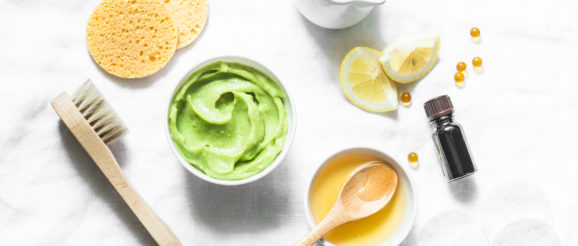VIDEO: Health food and drink: Innovation inspiration from the beauty market

This was the question posed by Mintel’s global food and drink analyst Alex Beckett during his presentation at FiE in Paris last week (December 3rd-5th).
He suggested there are a range of new ingredient ideas and marketing techniques that functional food and drink brands should consider replicating.
Selling synthetic ingredients
Speaking to his audience of industry professionals, he pointed out that synthetic ingredients are going to become an increasingly important source of sustainable nutrition in the future but consumers tend to perceive these as unnatural and therefore unhealthy.
However the beauty industry is doing a great job of marketing their synthetic ingredients in a very favourable way, he argued.
He suggests food and drink brands can learn a lot about the best way to communicate the benefits of synthetic ingredients to their customers.
“We are seeing more synthetic ingredients coming through in the food and drink space and if we are going to sell synthetic food and drink in the future we should learn from the beauty industry on how to sell those types of ingredients.
“If we are going to be using more lab-grown ingredients its important to look at how BPC are marketing synthetic ingredients as a positive thing. They absolutely can be controlled, created in a safe and sterile environment, they’re allergen free and they give consumers greater choice.
“It’s a controversial area but it’s something that’s going to become more important in the future.”
He used the example of the brand ‘Nomenclature’ in the US which boasts about its synthetic ingredients in its marketing materials, stating: “Scientists design these outstanding compounds as elegant solutions to very practical problems. For example, to find a compassionate equivalent to musk, an ecological substitute for sandalwood or a cost-efficient alternative to ambergris.”
Beckett also pointed out that the importance of synthetics is going to grow as science enables us to mimic many more ingredients, adding that one possible future innovation could be a replacement for cannabis.
“People want the calming beneficial elements of cannabis which has seen a rise in CBD products but legislation surrounding these products is still unclear. I wonder whether perhaps we will start to see synthetic solutions to these demands in the future.”
Indgestible beauty
Beckett told his audience there could be huge potential for food and drink to include ingredients taken directly from the cosmetics market.
He pointed out that US-based brand ‘Dirty Lemon + retinol’ is a first-to-market drinkable retinol-based beauty serum which promises to reduce fine lines by stimulating the skin’s production of fibroblasts and collagen.
“Retinol is a permitted form of Vitamin A that can be used in food and drink in Europe so there is an opportunity here,” he said, adding that hyalauronic acid could be another popular ingredient within functional food and drink.
“Everyone is going vegan and looking to move away from collagen and looking for plant-based skin boosting ingredients.
“This is where hyalauronic acid could come in. Hyalauronic drinks have been big in Asia for a while and it’s awaiting EFSA legislation but perhaps there is a big opportunity here for food and drink products that boost your own hyalauronic acid levels.”
Anti-pollution
Mintel data shows there was an 82% increase in product launches making an anti-pollution claim in the BPC market between 2017 and 2018. Beckett therefore suggested perhaps this is an area that can be exploited by food and drink brands.
He said that this is an area where products such as probiotics, with links to the microbiome and skin health, might be able to innovate.
“Polluted air can cause outbreaks in our skin and it’s suggested that the gut microbiome can keep skin looking healthy. So if we look after our microbiome that could be seen as a way to protect our skin against pollutants.
“This is an area that isn’t being tapped at all by food and drink brands yet and this is a potentially huge opportunity.”
Other potential up and coming ingredients from the BPC market that Beckett believes could work well within the food and drink market are: kakadu plum, luffah plum and argan oil.
Eye health
Speaking about new areas of health for functional food and drink, the analyst pointed out that eye-health has not been well exploited.
“No-one’s really tackling the eye health opportunity yet which is important because we know there is this epidemic of short-sightedness, particularly amongst kids.
“Of course you can use certain ingredients like Zinc and DHA. Perhaps we will see more products coming through in the future tapping into that demand.”
‘Normalising’ supplements
Beckett points out that achieving a place on the dining table ‘normalises’ a product and that integrating supplements with the dining experience is a great way to ensure they are taken daily, with a meal, as they often should be.
“Maybe there’s an opportunity to integrate supplements with products that are on the table, such as salt and pepper, chilli oil or salad dressings.”
